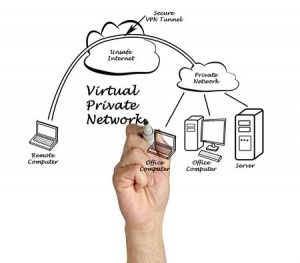Network administration tech tips for the office – and your home
 These days, it’s virtually impossible to avoid sharing a network. We’re connected at the office to a network that we share with co-workers. At home, we share our connection with family members. In public places, our devices will connect with whatever Wi-Fi is available, unless you turn off those settings.That’s why it’s important for anyone – and really, that’s all of us - that uses a computer, smartphone, or tablet to get savvy about the basics of network administration. With just a little know-how, you can maximize your connection and protect your data. We all need to set good policies that make our use of bandwidth more efficient, and protect sensitive files from prying eyes.To help you start thinking the way an IT person would about your use of a network, we’ve provided four essential steps you can take to manage a shared network connection – whether you’re at the office, working from a public place, or in your own home.Step 1: Protect private files and sensitive information with encryption tools. The idea is to lock down your network to prevent intruders, and then add a layer of protection by editing the permissions settings on files and folders. That way, you can grant or deny access to specific users on your network.Step 2: Use your device system settings - on a computer, smartphone, or tablet - to turn off network discovery functions and file sharing. If you’re worried about data privacy, loss, or theft from hackers while you’re working on a personal computer, you can use the settings to put a firewall in place and essentially go into “stealth mode.”Step 3: Provide a guest network. You can set up a separate wireless network for guests and mobile devices used by employees. Taking this step is worth it to many business owners, because it makes using personal devices immediately safer and will protect your office computers. If you do a lot of work from home, you could also set up a separate network to avoid dealing with competing demands for bandwidth.Step 4: Set up a private network for employees using software tools. You can create a VPN, or virtual private network, that securely connects your devices and encrypts the data that flows between them. This is a great option for anyone with employees that work remotely.Have questions about how to accomplish any of these steps? Here at Oram Corporate Advisors, we would be happy to provide you with additional information to protect your office network. We also offer IT consulting services to help you set smart policies and implement the solutions that will best suit your needs. We invite you to get in touch if there’s anything we can do for you!
These days, it’s virtually impossible to avoid sharing a network. We’re connected at the office to a network that we share with co-workers. At home, we share our connection with family members. In public places, our devices will connect with whatever Wi-Fi is available, unless you turn off those settings.That’s why it’s important for anyone – and really, that’s all of us - that uses a computer, smartphone, or tablet to get savvy about the basics of network administration. With just a little know-how, you can maximize your connection and protect your data. We all need to set good policies that make our use of bandwidth more efficient, and protect sensitive files from prying eyes.To help you start thinking the way an IT person would about your use of a network, we’ve provided four essential steps you can take to manage a shared network connection – whether you’re at the office, working from a public place, or in your own home.Step 1: Protect private files and sensitive information with encryption tools. The idea is to lock down your network to prevent intruders, and then add a layer of protection by editing the permissions settings on files and folders. That way, you can grant or deny access to specific users on your network.Step 2: Use your device system settings - on a computer, smartphone, or tablet - to turn off network discovery functions and file sharing. If you’re worried about data privacy, loss, or theft from hackers while you’re working on a personal computer, you can use the settings to put a firewall in place and essentially go into “stealth mode.”Step 3: Provide a guest network. You can set up a separate wireless network for guests and mobile devices used by employees. Taking this step is worth it to many business owners, because it makes using personal devices immediately safer and will protect your office computers. If you do a lot of work from home, you could also set up a separate network to avoid dealing with competing demands for bandwidth.Step 4: Set up a private network for employees using software tools. You can create a VPN, or virtual private network, that securely connects your devices and encrypts the data that flows between them. This is a great option for anyone with employees that work remotely.Have questions about how to accomplish any of these steps? Here at Oram Corporate Advisors, we would be happy to provide you with additional information to protect your office network. We also offer IT consulting services to help you set smart policies and implement the solutions that will best suit your needs. We invite you to get in touch if there’s anything we can do for you!
